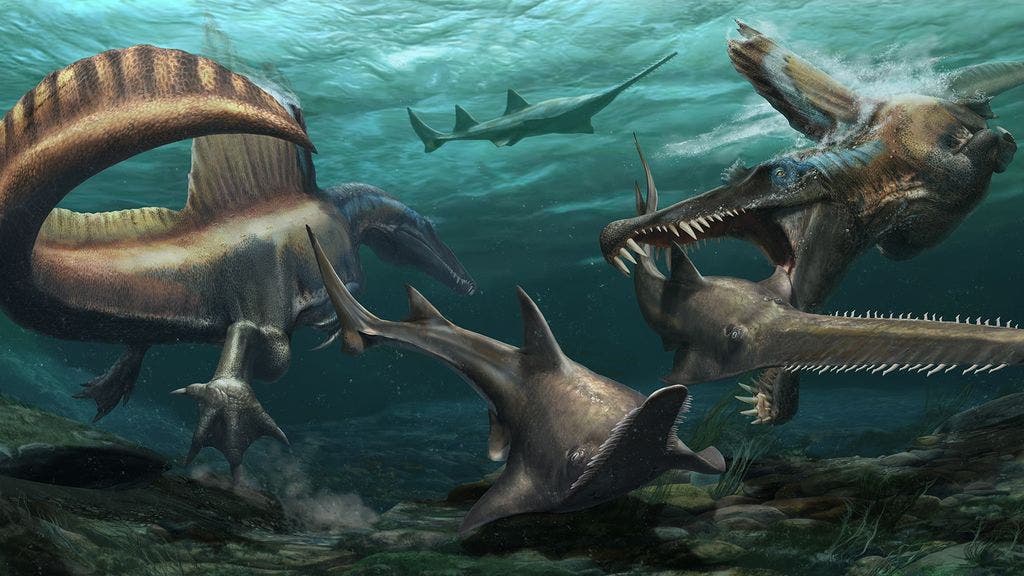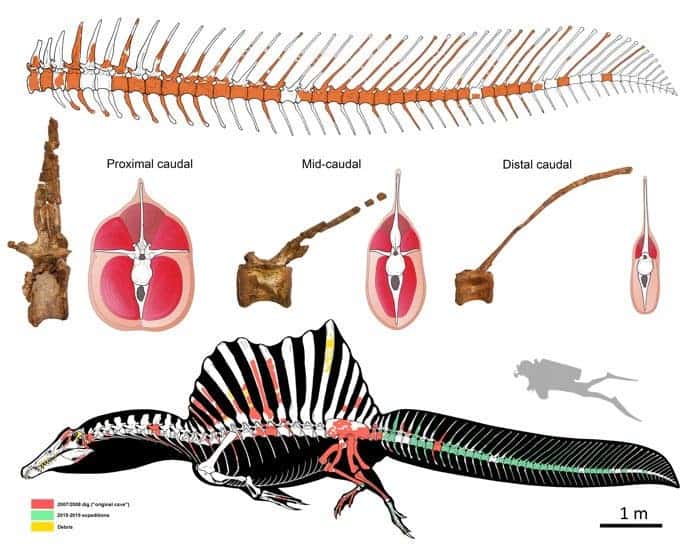
Dinosaurs dominated the terrestrial environment for hundreds of millions of years, but air and water didn’t seem like their strong point at all. However, this shouldn’t be a cause for over-generalization. An international team of scientists has now confirmed that Spinosaurus aegyptiacus could swim, making it the first such dinosaur that we know of.
Spinosaurus is perhaps one of the most bizarre dinosaurs to have ever lived. It had the snout of a crocodile, a relatively large caudal fin on its back, and — as recent fossils have shown — a tadpole-like tail that was about as long as its body.
For decades, reconstructions of the dinosaur’s bulky body suggested that its tail was rather narrow and short. However, tail fossils belonging to Spinosaurus unearthed by paleontologists in Morocco suggest that the tail was larger and exhibited clear adaptations for aquatic environments.

In fact, Spinosaurus had such a well-adapted tail that it resembles an oar when viewed from the profile. The end of the tail has no bony bumps, allowing the tip to undulate back and forth such that the dinosaur could propel itself forward through the water of river ecosystems.
“This was basically a dinosaur trying to build a fishtail,” Nizar Ibrahim, the lead researcher examining the fossil, told National Geographic.
Ibrahim had previously suggested that Spinosaurus was semi-aquatic in a 2014 study, but his evidence at the time wasn’t as convincing.
In addition to analyzing the structure and anatomy of the tail itself using photogrammetry, researchers at Harvard University also performed a robotic model of the tail’s movement, further cementing the notion that this dinosaur could swim, as reported in the journal Nature.
“This discovery is the nail in the coffin for the idea that non-avian dinosaurs never invaded the aquatic realm,” Ibrahim said. “This dinosaur was actively pursuing prey in the water column, not just standing in shallow waters waiting for fish to swim by. It probably spent most of its life in the water.”
However, Spinosaurus also spent time on land. How much time the 100-million-year-old dinosaur split between living in the water and in terrestrial environments is not clear at this point.
“These results are consistent with the suite of adaptations for an aquatic lifestyle and piscivorous diet that have previously been documented for Spinosaurus,” the researchers wrote in Nature.
All the bones of Spinosaurus used to describe the dinosaur in the new study are now housed at the University of Casablanca in Morocco. This is somewhat atypical but very welcomed for north-African research, as Moroccan fossils such as these often end up in collections at wealthy universities in Europe or the United States.






